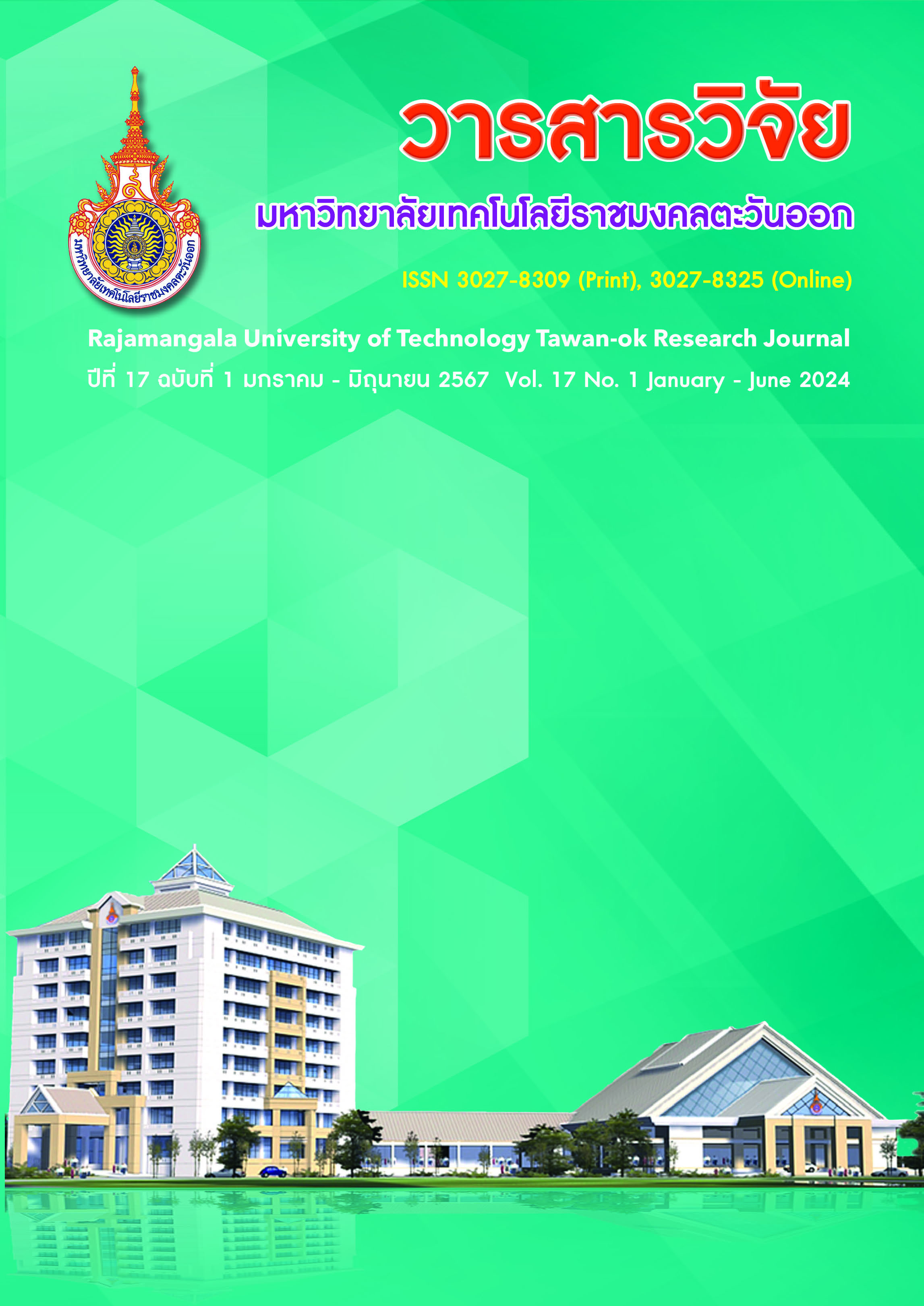Effect of Plant Growth Regulators on Micropropagation of Nymphaea ‘Aurora’
Main Article Content
Abstract
Water-lilies (Nymphaea spp.) are among the most popular aquatic plants due to their beautiful flowers, making them highly valued. The Nymphaea ‘Aurora’ is a hybrid hardy Water-lilies with small flowers that bloom profusely. Plant tissue culture technology has been employed in propagating plants to achieve desired characteristics and rapidly increase their numbers. This research aims to investigate appropriate sterilization methods for the rhizomes and young shoots. It also examines the effects of growth regulators on root induction and callus induction in aseptic conditions using MS (Murashige and Skoog, 1962) medium by semi-solid and liquid with temporary immersion bioreactor systems (TIBs). It was found that the most effective method for sterilizing the rhizome explants involved using 10 percent sodium hypochlorite solution for 20 minutes, followed by 0.2 percent mercuric chloride solution for 10 minutes. This method achieved a 100 percent sterility rate and an 86.67 percent survival rate. The shoots from the rhizome parts were able to induce shoots and leaves better than the young shoots. Tissue culture of the dwarf Water-lilies in liquid MS medium supplemented with 10 µM BAP (6-Benzylaminopurine) and 5 µM IAA (Indole-3-acetic acid) using a temporary immersion bioreactor system showed that shoot induction was higher than on semi-solid medium. This method produced the highest number of shoots and leaves, with 1.78 shoots and 14.00 leaves within six weeks. Regarding the effect of growth regulators on root induction, MS medium supplemented with 10 µM NAA (Naphthaleneacetic acid) induced the highest number of roots, with 16.22 roots. Concerning the effect of growth regulators on callus induction in young leaf, young shoot, and root cultures on semi-solid MS medium supplemented with 6 µM TDZ (Thidiazuron) and 0.5 µM NAA, it was found that the leaf and root tissues enlarged but did not develop into callus.
Article Details

This work is licensed under a Creative Commons Attribution-NonCommercial-NoDerivatives 4.0 International License.
References
Blidar, C. F., Tripon, I. M., & Ilea, C. (2017). In vitro conservation of genetic resources of Nymphaea lotus var. thermalis (DC.) Tuzs., an endangered plant species. Romanian Biotechnological Letters, 22, 1-13.
Hossain, M. A., Shamim Kabir A. H. M., Jahan T. A., & Hasan M. N. (2008). Micropopagation of Stevia. Int. J. Sustain. Crop Prod, 3(3), 1-9.
Masaki, N., Yensoon, S., & Te-chato, S. (2016). Effects of growth regulators on in vitro callus and shoot induction of Hawortia. Songklanakarin Journal of Plant Science, 3(Suppl.2), M02/76-82. (in Thai)
Noimai, Y. (2012). Micropropagation of Nymphaea Hybrid ‘Chalong kwan’ (Master Thesis). Rajamangala University of Technology Thanyaburi, Pathum Thani.
Ramakrishna, N., Lacey J., & Smith J. E. (1991). Effect of surface sterilization, fumigation and gamma irradiation on the microflora and germination of barley seeds. Int J Food Microbiol, 13(1), 47-54.
Rodloy, A. (2020). Marketing and Production Management of Aquatic Plants in Thailand for Exported and Sustainable Use of Resources (research report). Bangkok: Inland Aquaculture Research and Development Division, Department of Fisheries, Ministry of Agriculture and Cooperatives.
Sanguandikul, S., Chansin, N., Donchanthong, R., Suwannathat, T., Khieonaak, N., Prasertlap, S., & Rodbutr, N. (2018). Development of ornamental waterlily by crossing subgenus (research report). Rajamangala University of Technology Tawan-Ok. 1-39. (in Thai)
Smith J., & Johnson, A. (2020). Mechanisms of microbial sterilization using mercuric chloride. Journal of Microbiology, 25(3), 123-135.
Sunian, E. (2004). Development of Sterilisation Procedures and in vitro studies of Nymphaea lotus. (Master thesis). Faculty of Agriculture University Putra. Malaysia.
Teanchartsakul, N., Laohavisuti, N., & Seesanong, S. (2019). Temporary Immersion Bioreactor for Micropropagation of Anubias barteri ‘Broad leaf’. King Mongkut’s Agricultural Journal, 37(1), 23-31. (in Thai)
Thanonkaew, P., Thanonkaew, S., & Sucharitkul, K. (2007). Application of biotechnology for the production of flavonoids from snow lotus. Academic Service Center Journal, 15(1-2), 14-20. (in Thai)
Thongpoem, P., Noimai, Y., & Thanomchat, P. (2020). In Vitro, Tissue culture of Nymphoides indica (L.) Kuntze for conservation (research report). Rajamangala University of Technology Thanyaburi. (in Thai)
Trang, N. T. Q., Hong H. T. K., Huong V T. M., & Long D. T. (2021). In vitro Propagation of Red Lotus (Nelumbo nucifera Gaertn) -An Aquatic Edible Plant in Vietnam. Agricultural Science Digest, 41(Special Issue), 129-136.


